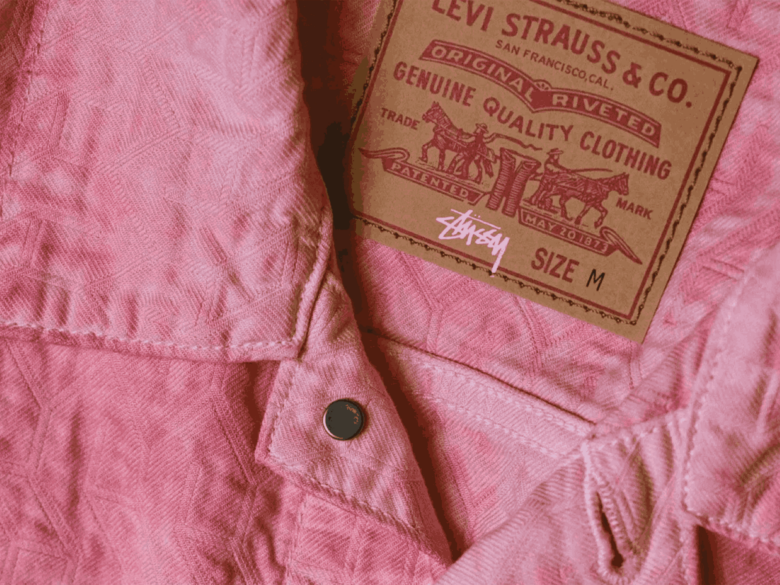White Paper: Can digital-only clothing really tackle the fast-fashion crisis?

Yes, digital-only clothing can tackle the fast-fashion crisis. There, I said it. I’m not about to sit on the fence. I firmly believe that within five years digital-only clothing will offer consumers and creators a legitimate and long-term alternative to the environmental and human issues we are currently facing due to the overproduction and overconsumption of fashion.
There are three main reasons I think this is possible, starting with the fact that we are on the cusp of the Web3 and metaverse revolution. The progression and accessibility of converging types of technologies, like game engine tech, cloud computing, cloth simulation, haptics and artificial intelligence – along with a willingness and suitability for decentralisation – are providing the perfect storm for innovation and disruption.
Prior to the pandemic there had been a tacit understanding and an inertia within the fashion industry for far too long. It was Covid-19 that forced certain fashion businesses to embrace 3D design so that they could still be in business for the next season – for example, within the sampling production process or in innovating B2B and B2C selling when showrooms, fashion shows and flagship stores were shuttered. However the results were mixed, with a portion of the fashion circuit still preferring to celebrate physicality in all its forms, whether that’s being at an aftershow party, touching an exotic skin or trying on a Raf Simons coat.
But the experimentation of the past two years, with regard to hybrid shows, virtual showrooms and more recently the emergence of selling digital-only garments, has moved this discussion on somewhat. I believe that once the tech is able to produce digital assets and digital environments that can capture and captivate a fashion buyer or journalist for longer than 15 minutes, we will really be getting somewhere. Despite my belief in and high hopes for decentralisation, cultural gatekeeping and influence within fashion will take longer to diffuse through the mainstream population.
The second reason I believe digital-only fashion can move the dial on the fast-fashion crisis is there’s more of an ease around who has access to it and who can create it. My first item of digital fashion cost €6 (about £5) from Tribute Brand in April 2020, and there are now many more providers offering items at these kinds of non-exclusive price points.
As to how we can get involved with digital-only fashion, this can also be perceived as quite accessible. There is lots of free digital fashion that can be experienced via Snapchat and Instagram in their augmented reality filters. Gamers have been interacting and investing in digital-only fashion for the past 15-plus years, also with high accessibility levels and across almost all customer segments. Not only that but the market for digital fashion “wearables” has exploded in the past two years as more and more people are teaching themselves 3D fashion design. Digital-only fashion is highly complementary to the creator economy, and when teamed with blockchain and a marketplace as a NFT, it could offer many people a level of potential cultural and economic sovereignty not seen before, and my prediction is that we will see this on a great scale.
One of the pushbacks of this debate that needs to be addressed is that if, and when, the production and consumption of fast fashion slows, what will happen to those producers who are typically lower-income factory workers without contracted employment? Undoubtedly they will be adversely affected if they are not part of a structured retraining programme, which could be unlikely and also forms part of a much larger global discussion about automation within fashion production.
The final reason is that, due to the tech advances detailed in reason one, we will most likely continue to spend increasingly more time in virtual environments – the metaverse – for social and professional reasons. This new locality means we will choose to adapt to our surroundings by creating profiles and avatars, and curating our personalities and external signals of who we are by what we look like – and what we are wearing, just as we do more regularly in IRL.
One of the oft-cited, depressing statistics about the misuse of fast fashion is that 14% of people purchase clothes just to take fresh ’fit pics for social media. These unworn (and often returned and then burned) clothes will not be needed for much longer. Not so very far away in the future, our most used social media platforms will not be just 2D feeds of dancing Gen Zs, as Web3 means the walls of the internet are coming down and we will be situated in simulated or hybrid environments with our friends and/or our bosses and we will have legs and arms and will be able to bounce (or fly) from chosen scenario to chosen scenario. The point here is that the perceived need for something new will be negated by the excitement that comes from the form of the environment itself.
A last point, which is not a core reason but one that I believe could be a significant part of discussions going forward, revolves around the replicability, measurability and transparency of digital-only fashion. There is dearth of understanding for many about the difference between the benefit, challenges and potential of digital fashion assets solo, and those that are created and minted as NFTs. This industry is still in its infancy and valid research that looks at scaled life-cycle data about the impact of the virtuality of its production, distribution and usage is sparse. However in theory it is more feasible for us to provide, and as business owners in this emerging sector we have a duty of care to contribute to education and best practice in these areas.
Will digital-only fashion be for everyone? Not initially. But I think that the consumer segments that consume the most fast fashion do tend to lean towards younger buyers and those with less disposable income. And these are the very same segments for whom digital-only fashion will be accessible and omnipresent in the metaverse as a new and fun way to partake in fashion trends, belong to new communities and develop their digital identity. Furthermore, as younger and younger generations come through, they are already starting to perceive that digital/virtual goods are as valuable and collectable as physical items, sometimes even more so. And this offers a significant paradigm shift – one where a new reality for fashion begins, one that is more equitable, with expanded creativity and accessibility for all.

